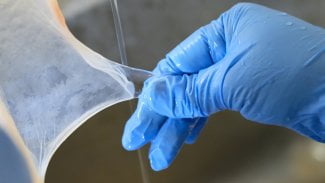groff_diff
groff_diff.man
Last update : 05 July 2002
This file is part of groff, the GNU roff type-setting system.
It is the source of the man-page groff_diff(7).
Copyright (C) 1989, 2001, 2002 Free Software Foundation, Inc.
written by James Clark
modified by Werner Lemberg <wl@gnu.org>
Bernd Warken <bwarken@mayn.de>
Permission is granted to copy, distribute and/or modify this document
under the terms of the GNU Free Documentation License, Version 1.1 or
any later version published by the Free Software Foundation; with the
Invariant Sections being this .ig-section and AUTHORS, with no
Front-Cover Texts, and with no Back-Cover Texts.
A copy of the Free Documentation License is included as a file called
FDL in the main directory of the groff source package.
A copy of the GNU Free Documentation License is also available in this
Debian package as /usr/share/doc/groff/copyright.
.
.
.
.
.
.
.
.
.
.
.
.
.
.
.
.
.
.
.
.
.
.
NAME
groff_diff - differences between GNU troff and classical troff
.
.
DESCRIPTION
.
This manual page describes the language differences between
R groff ,
the GNU
roff
text processing system and the classical
roff
formatter of the freely available Unix\~7 of the 1970s, documented in
the
Troff User's Manual
by
Osanna
and
R Kernighan .
This inludes the roff language as well as the intermediate output
format (troff output).
.
The section
SEE ALSO
gives pointers to both the classical
roff
and the modern
groff
documentation.
.
At the moment, this document is the place of the most actual
documentation within the
groff
system.
.
This might change in the future.
.
Actually, all novelties of the groff language are first described here
and will pervade into the other documents only at a later stage.
.
.
GROFF LANGUAGE
.
In this section, all additional features of
groff
compared to the classical Unix\~7
troff
are described in detail.
.
.
Long names
. The names of number registers, fonts, strings/\:macros/\:diversions, special characters, and colors can be of any length. . In escape sequences, additionally to the classical I ( xx construction for a two character name, you can use I [ xxx ] for a name of arbitrary length, for example in .I \[rs][ xxx ]
Print the special character called
R xxx .
.
I \[rs]f[ xxx ]
Set font
R xxx .
.
Additionally,
\[rs]f[]
is a new syntax equal to
R \[rs]fP ,
i.e., to return to the previous font.
.
I \[rs]*[ xxx arg1 arg2 ... ]
Interpolate string
R xxx ,
taking
R arg1 ,
R arg2 ,
...
as arguments.
.
I \[rs]n[ xxx ]
Interpolate number register
R xxx .
.
.
Fractional pointsizes
. A scaled point is equal to 1/sizescale points, where sizescale is specified in the DESC file (1 by default). . There is a new scale indicator z that has the effect of multiplying by sizescale. . Requests and escape sequences in troff interpret arguments that represent a pointsize as being in units of scaled points, but they evaluate each such argument using a default scale indicator of R z . Arguments treated in this way are the argument to the ps request, the third argument to the cs request, the second and fourth arguments to the tkf request, the argument to the \[rs]H escape sequence, and those variants of the \[rs]s escape sequence that take a numeric expression as their argument. .For example, suppose sizescale is 1000; then a scaled point will be
equivalent to a millipoint; the call
.ps 10.25
is equivalent to
.ps 10.25z
and so sets the pointsize to 10250 scaled points, which is equal to
10.25 points.
.
The number register
\[rs]n[.s]
returns the pointsize in points as decimal fraction.
.
There is also a new number register
\[rs]n[.ps]
that returns the pointsize in scaled points.
.
It would make no sense to use the
z
scale indicator in a numeric expression whose default scale indicator
was neither
u
nor
R z ,
and so
troff
disallows this.
.
Similarly it would make no sense to use a scaling indicator other than
z
or
u
in a numeric expression whose default scale indicator was
R z ,
and so
troff
disallows this as well.
.
There is also new scale indicator\~\c
s
which multiplies by the number of units in a scaled point.
.
So, for example,
\[rs]n[.ps]s
is equal to
R 1m .
Be sure not to confuse the
s
and
z
scale indicators.
.
.
Numeric expressions
. Spaces are permitted in a number expression within parentheses. .M
indicates a scale of 100ths of an em.
f
indicates a scale of 65536 units, providing fractions for color
definitions with the
defcolor
request.
.
For example, 0.5f = 32768u.
.
B e1 >? e2
The maximum of
e1
and
R e2 .
.
B e1 <? e2
The minimum of
e1
and
R e2 .
.
I ( c ; e )
I \[rs]A' anything '
This expands to
1
or
0
resp., depending on whether
anything
is or is not acceptable as the name of a string, macro, diversion, number
register, environment, font, or color.
It will return\~\c
0
if
anything
is empty.
.
This is useful if you want to lookup user input in some sort of
associative table.
.
I \[rs]B' anything '
This expands to
1
or
0
resp., depending on whether
anything
is or is not a valid numeric expression.
.
It will return\~\c
0
if
anything
is empty.
.
I \[rs]C' xxx '
Typeset character named
R xxx .
Normally it is more convenient to use
I \[rs][ xxx ]R].
But
\[rs]C
has the advantage that it is compatible with recent versions of
UNIX
and is available in compatibility mode.
.
\[rs]E
This is equivalent to an escape character, but it is not interpreted in
copy-mode.
.
For example, strings to start and end superscripting could be defined
like this
.
.
The use of
\[rs]E
ensures that these definitions will work even if
\[rs]*{
gets interpreted in copy-mode (for example, by being used in a macro
argument).
.
I \[rs]F f
I \[rs]F( fm
I \[rs]F[ fam ]
Change font family.
.
This is the same as the
fam
request.
.
\[rs]F[]
switches back to the previous color (note that
\[rs]FP
won't work; it selects font family `P' instead).
.
I \[rs]m x
I \[rs]m( xx
I \[rs]m[ xxx ]
Set drawing color.
\[rs]m[]
switches back to the previous color.
.
I \[rs]M x
I \[rs]M( xx
I \[rs]M[ xxx ]
Set background color for filled objects drawn with the
I \[rs]D' ... '
commands.
\[rs]M[]
switches back to the previous color.
.
I \[rs]N' n '
Typeset the character with code
n
in the current font.
n
can be any integer.
.
Most devices only have characters with codes between 0 and 255.
.
If the current font does not contain a character with that code,
special fonts will
not
be searched.
.
The
\[rs]N
escape sequence can be conveniently used in conjunction with the
char
request, for example
.
.
The code of each character is given in the fourth column in the font
description file after the
charset
command.
.
It is possible to include unnamed characters in the font description
file by using a name of
R --- ;
the
\[rs]N
escape sequence is the only way to use these.
.
I \[rs]O n
I \[rs]O[ n ]
Suppressing troff output.
.
The escapes
R \[rs]02 ,
R \[rs]O3 ,
R \[rs]O4 ,
and
\[rs]O5
are intended for internal use by
R grohtml .
.
\[rs]O0
Disable any ditroff glyphs from being emitted to the device driver,
provided that the escape occurs at the outer level (see
\[rs]O3
and
R \[rs]O4 ).
.
\[rs]O1
Enable output of glyphs, provided that the escape occurs at the outer
level.
\[rs]O0
and
\[rs]O1
also reset the registers
R \[rs]n[opminx] ,
R \[rs]n[opminy] ,
R \[rs]n[opmaxx] ,
and
\[rs]n[opmaxy]
to\~-1.
.
These four registers mark the top left and bottom right hand corners
of a box which encompasses all written glyphs.
.
\[rs]O2
Provided that the escape occurs at the outer level, enable output of
glyphs and also write out to stderr the page number and four registers
encompassing the glyphs previously written since the last call to
R \[rs]O .
.
\[rs]O3
Begin a nesting level.
.
At start-up,
troff
is at outer level.
.
This is really an internal mechanism for
grohtml
while producing images.
.
They are generated by running the troff source through
troff
to the postscript device and
ghostscript
to produce images in PNG format.
.
The
\[rs]O3
escape will start a new page if the device is not html (to reduce the
possibility of images crossing a page boundary).
.
\[rs]O4
End a nesting level.
.
I \[rs]O5[ Pfilename ]
This escape is
grohtml
specific.
.
Provided that this escape occurs at the outer nesting level, write
filename
to stderr.
.
The position of the image,
R P ,
must be specified and must be one of l, r, c, or i (left, right,
centered, inline).
.
filename
will be associated with the production of the next inline image.
.
I \[rs]R' name \[+-]n '
This has the same effect as
.
I .nr name \[+-]n
.
I \[rs]s( nn
I \[rs]s\[+-]( nn
Set the point size to
nn
points;
nn
must be exactly two digits.
.
I \[rs]s[\[+-] n ]
I \[rs]s\[+-][ n ]
I \[rs]s'\[+-] n '
I \[rs]s\[+-]' n '
Set the point size to
n
scaled points;
n
is a numeric expression with a default scale indicator of\~\c
R z .
.
I \[rs]V x
I \[rs]V( xx
I \[rs]V[ xxx ]
Interpolate the contents of the environment variable
R xxx ,
as returned by
getenv(3).
\[rs]V
is interpreted in copy-mode.
.
I \[rs]Y x
I \[rs]Y( xx
I \[rs]Y[ xxx ]
This is approximately equivalent to
I \[rs]X'\[rs]*[ xxx ]'R].
However the contents of the string or macro
xxx
are not interpreted; also it is permitted for
xxx
to have been defined as a macro and thus contain newlines (it is not
permitted for the argument to
\[rs]X
to contain newlines).
.
The inclusion of newlines requires an extension to the UNIX troff
output format, and will confuse drivers that do not know about this
extension.
.
I \[rs]Z' anything '
Print anything and then restore the horizontal and vertical position;
anything
may not contain tabs or leaders.
.
\[rs]$0
The name by which the current macro was invoked.
.
The
als
request can make a macro have more than one name.
.
\[rs]$*
In a macro or string, the concatenation of all the arguments separated
by spaces.
.
\[rs]$@
In a macro or string, the concatenation of all the arguments with each
surrounded by double quotes, and separated by spaces.
.
I \[rs]$( nn
I \[rs]$[ nnn ]
In a macro or string, this gives the
R nn -th
or
R nnn -th
argument.
.
Macros and strings can have an unlimited number of arguments.
.
I \[rs]? anything \[rs]?
When used in a diversion, this will transparently embed
anything
in the diversion.
anything
is read in copy mode.
.
When the diversion is reread,
anything
will be interpreted.
anything
may not contain newlines; use
\[rs]!
if you want to embed newlines in a diversion.
.
The escape sequence
\[rs]?
is also recognised in copy mode and turned into a single internal
code; it is this code that terminates
R anything .
Thus
.
.
will print\~\c
R 4 .
.
\[rs]/
This increases the width of the preceding character so that the
spacing between that character and the following character will be
correct if the following character is a roman character.
.
It is a good idea to use this escape sequence whenever an italic
character is immediately followed by a roman character without any
intervening space.
.
\[rs],
This modifies the spacing of the following character so that the
spacing between that character and the preceding character will
correct if the preceding character is a roman character.
.
It is a good idea to use this escape sequence whenever a roman
character is immediately followed by an italic character without any
intervening space.
.
\[rs])
Like
\[rs]&
except that it behaves like a character declared with the
cflags
request to be transparent for the purposes of end-of-sentence
recognition.
.
\[rs]~
This produces an unbreakable space that stretches like a normal
inter-word space when a line is adjusted.
.
\[rs]:
This causes the insertion of a zero-width break point.
.
It is equal to
\[rs]%
within a word but without insertion of a soft hyphen character.
.
\[rs]#
I .aln xx yy
Create an alias
xx
for number register object named
R yy .
The new name and the old name will be exactly equivalent.
.
If
yy
is undefined, a warning of type
reg
will be generated, and the request will be ignored.
.
I .als xx yy
Create an alias
xx
for request, string, macro, or diversion object named
R yy .
.
The new name and the old name will be exactly equivalent (it is
similar to a hard rather than a soft link).
.
If
yy
is undefined, a warning of type
mac
will be generated, and the request will be ignored.
.
The
R de ,
R am ,
R di ,
R da ,
R ds ,
and
as
requests only create a new object if the name of the macro, diversion
or string diversion is currently undefined or if it is defined to be a
request; normally they modify the value of an existing object.
.
I .ami xx yy
Append to macro indirectly.
.
See the
dei
request below for more information.
.
I .am1 xx yy
Similar to
R .am ,
but compatibility mode is switched off during execution.
.
To be more precise, a `compatibility save' token is inserted at the
beginning of the macro addition, and a `compatibility restore' token at
the end.
.
As a consequence, the requests
R am ,
R am1 ,
R de ,
and
de1
can be intermixed freely since the compatibility save/\:restore tokens
only affect the macro parts defined by
.am1
and
R .ds1 .
.
I .asciify xx
This request `unformats' the diversion
xx
in such a way that
ASCII
and space characters (and some escape sequences) that were formatted
and diverted into
xx
will be treated like ordinary input characters when
xx
is reread.
Useful for diversions in conjunction with the
.writem
request.
.
It can be also used for gross hacks; for example, this
.
.
will set register\~\c
n
to\~1.
.
Note that glyph information (font, font size, etc.) is not preserved;
use
.unformat
instead.
.
I .as1 xx yy
Similar to
R .as ,
but compatibility mode is switched off during expansion.
.
To be more precise, a `compatibility save' token is inserted at the
beginning of the string, and a `compatibility restore' token at the end.
.
As a consequence, the requests
R as ,
R as1 ,
R ds ,
and
ds1
can be intermixed freely since the compatibility save/\:restore tokens
only affect the (sub)strings defined by
as1
and
R ds1 .
.
.backtrace
Print a backtrace of the input stack on stderr.
.
I .blm xx
Set the blank line macro to
R xx .
If there is a blank line macro, it will be invoked when a blank line
is encountered instead of the usual troff behaviour.
.
I .box xx
I .boxa xx
These requests are similar to the
di
and
da
requests with the exception that a partially filled line will not
become part of the diversion (i.e., the diversion always starts with a
new line) but restored after ending the diversion, discarding the
partially filled line which possibly comes from the diversion.
.
.break
Break out of a while loop.
.
See also the
while
and
continue
requests.
.
Be sure not to confuse this with the
br
request.
.
.brp
This is the same as
R \[rs]p .
.
I .cflags n c1 c2...
Characters
R c1 ,
R c2 ,...
have properties determined by
R n ,
which is ORed from the following:
.
1
The character ends sentences (initially characters
.?!
have this property).
.
2
Lines can be broken before the character (initially no characters have
this property); a line will not be broken at a character with this
property unless the characters on each side both have non-zero
hyphenation codes.
.
4
Lines can be broken after the character (initially characters
-\[rs](hy\[rs](em
have this property); a line will not be broken at a character with
this property unless the characters on each side both have non-zero
hyphenation codes.
.
8
The character overlaps horizontally (initially characters
\[rs](ul\[rs](rn\[rs](ru
have this property).
.
16
The character overlaps vertically (initially character
\[rs](br
has this property).
.
32
An end-of-sentence character followed by any number of characters with
this property will be treated as the end of a sentence if followed by
a newline or two spaces; in other words the character is transparent
for the purposes of end-of-sentence recognition; this is the same as
having a zero space factor in (initially characters
\[dq]')]*\[rs](dg\[rs](rq
have this property).
.
I .char c string
Define character
c
to be
R string .
Every time character
c
needs to be printed,
string
will be processed in a temporary environment and the result will be
wrapped up into a single object.
.
Compatibility mode will be turned off and the escape character will be
set to
\[rs]
while
string
is being processed.
.
Any emboldening, constant spacing or track kerning will be applied to
this object rather than to individual characters in
R string .
.
A character defined by this request can be used just like a normal
character provided by the output device.
.
In particular other characters can be translated to it with the
tr
request; it can be made the leader character by the
lc
request; repeated patterns can be drawn with the character using the
\[rs]l
and
\[rs]L
escape sequences; words containing the character can be hyphenated
correctly, if the
hcode
request is used to give the character a hyphenation code.
.
There is a special anti-recursion feature: use of character within the
character's definition will be handled like normal characters not
defined with
R char .
A character definition can be removed with the
rchar
request.
.
I .chop xx
Chop the last character off macro, string, or diversion
R xx .
This is useful for removing the newline from the end of diversions
that are to be interpolated as strings.
.
I .close stream
Close the stream named
R stream ;
stream
will no longer be an acceptable argument to the
write
request.
.
See the
open
request.
.
.continue
Finish the current iteration of a while loop.
.
See also the
while
and
break
requests.
.
I .color n
If
n
is non-zero or missing, enable colors (this is the default), otherwise
disable them.
.
I .cp n
If
n
is non-zero or missing, enable compatibility mode, otherwise disable
it.
.
In compatibility mode, long names are not recognised, and the
incompatibilities caused by long names do not arise.
.
I .defcolor xxx scheme color_components
Define color.
scheme
can be one of the following values:
rgb
(three components),
cym
(three components),
cmyk
(four components), and
gray
or
grey
(one component).
.
Color components can be given either as a hexadecimal string or as
positive decimal integers in the range 0-65535.
.
A hexadecimal string contains all color components concatenated; it
must start with either
#
or
R ## .
The former specifies hex values in the range 0-255 (which are
internally multiplied by\~257), the latter in the range 0-65535.
.
Examples: #FFC0CB (pink), ##ffff0000ffff (magenta).
.
A new scaling indicator\~\c
f
has been introduced which multiplies its value by\~65536; this makes
it convenient to specify color components as fractions in the range 0
to\~1.
.
Example:
.
.
Note that
f
is the default scaling indicator for the
defcolor
request, thus the above statement is equivalent to
.
.
The color named
default
(which is device-specific) can't be redefined.
.
It is possible that the default color for
and
is not the same.
.
I .dei xx yy
Define macro indirectly.
.
The following example
.
.
is equivalent to
.
.
I .de1 xx yy
Similar to
R .de ,
but compatibility mode is switched off during execution.
.
On entry, the current compatibility mode is saved and restored at exit.
.
I .do xxx
Interpret
.xxx
with compatibility mode disabled.
.
For example,
.
.
.
would have the same effect as
.
.
except that it would work even if compatibility mode had been enabled.
.
Note that the previous compatibility mode is restored before any files
sourced by
xxx
are interpreted.
.
.
I .ds1 xx yy
Similar to
R .ds ,
but compatibility mode is switched off during expansion.
.
To be more precise, a `compatibility save' token is inserted at the
beginning of the string, and a `compatibility restore' token at the end.
.
.ecs
Save current escape character.
.
.ecr
Restore escape character saved with
R ecs .
Without a previous call to
R ecs ,
`\[rs]'
will be the new escape character.
.
I .evc xx
Copy the contents of environment
xx
to the current environment.
.
No pushing or popping of environments will be done.
.
I .fam xx
Set the current font family to
R xx .
The current font family is part of the current environment.
If
xx
is missing, switch back to previous font family.
.
The value at start-up is `T'.
.
See the description of the
sty
request for more information on font families.
.
I .fchar c string
Define fallback character
c
to be
R string .
The syntax of this request is the same as the
char
request; the only difference is that a character defined with
char
hides the glyph with the same name in the current font, whereas a
character defined with
fchar
is checked only if the particular glyph isn't found in the current font.
.
This test happens before checking special fonts.
.
I .fspecial f s1 s2...
When the current font is
R f ,
fonts
R s1 ,
R s2 ,...
will be special, that is, they will searched for characters not in
the current font.
.
Any fonts specified in the
special
request will be searched after fonts specified in the
fspecial
request.
.
I .ftr f g
Translate font
f
to
R g .
Whenever a font named
f
is referred to in an
\[rs]f
escape sequence, or in the
R ft ,
R ul ,
R bd ,
R cs ,
R tkf ,
R special ,
R fspecial ,
R fp ,
or
R sty
requests, font
g
will be used.
If
g
is missing, or equal to
f
then font
f
will not be translated.
.
I .hcode c1 code1 c2 code2...
Set the hyphenation code of character
c1
to
code1
and that of
c2
to
R code2 .
A hyphenation code must be a single input character (not a special
character) other than a digit or a space.
.
Initially each lower-case letter a-z has a hyphenation code, which is
itself, and each upper-case letter A-Z has a hyphenation code which is
the lower-case version of itself.
.
See also the
hpf
request.
.
I .hla lang
Set the current hyphenation language to
R lang .
Hyphenation exceptions specified with the
hw
request and hyphenation patterns specified with the
hpf
request are both associated with the current hyphenation language.
.
The
hla
request is usually invoked by the
troffrc
file.
.
I .hlm n
Set the maximum number of consecutive hyphenated lines to\~\c
R n .
If
n
is negative, there is no maximum.
.
The default value is\~-1.
.
This value is associated with the current environment.
.
Only lines output from an environment count towards the maximum
associated with that environment.
.
Hyphens resulting from
\[rs]%
are counted; explicit hyphens are not.
.
I .hpf file
Read hyphenation patterns from
R file ;
this will be searched for in the same way that
B name .tmac
is searched for when the
I -m name
option is specified.
.
It should have the same format as (simple) patterns files.
.
More specifically, the following scanning rules are implemented.
.
\[bu]
A percent sign starts a comment (up to the end of the line) even if
preceded by a backslash.
.
\[bu]
No support for `digraphs' like
R \[rs]$ .
.
\[bu]
I ^^ xx
(x
is 0-9 or a-f) and
I ^^ x
(character code of\~\c
x
in the range 0-127) are recognized; other use of
^
causes an error.
.
\[bu]
No macro expansion.
.
\[bu]
hpf
checks for the expression
\[rs]patterns{...}
(possibly with whitespace before and after the braces).
.
Everything between the braces is taken as hyphenation patterns.
.
Consequently,
{
and
}
are not allowed in patterns.
.
\[bu]
Similarly,
\[rs]hyphenation{...}
gives a list of hyphenation exceptions.
.
\[bu]
\[rs]endinput
is recognized also.
.
\[bu]
For backwards compatibility, if
\[rs]patterns
is missing, the whole file is treated as a list of hyphenation patterns
(only recognizing the
R % \~\c
character as the start of a comment).
.
Use the
hpfcode
request to map the encoding used in hyphenation patterns files to
R groff 's
input encoding.
The set of hyphenation patterns is associated with the current language
set by the
hla
request.
.
The
hpf
request is usually invoked by the
troffrc
file; a second call replaces the old patterns with the new ones.
.
I .hpfa file
The same as
hpf
except that the hyphenation patterns from
file
are appended to the patterns already loaded in the current language.
.
I .hpfcode a b c d ...
After reading a hyphenation patterns file with the
hpf
or
hpfa
request, convert all characters with character code\~\c
a
in the recently read patterns to character code\~\c
R b ,
character code\~\c
c
to\~\c
R d ,
etc.
.
Initially, all character codes map to themselves.
.
The arguments of
hpfcode
must be integers in the range 0 to\~255.
.
Note that it is even possible to use character codes which are invalid in
groff
otherwise.
.
I .hym n
Set the
hyphenation margin
to\~\c
R n :
when the current adjustment mode is not\~\c
R b ,
the line will not be hyphenated if the line is no more than
n
short.
.
The default hyphenation margin is\~0.
.
The default scaling indicator for this request is\~\c
R m .
The hyphenation margin is associated with the current environment.
.
The current hyphenation margin is available in the
\[rs]n[.hym]
register.
.
I .hys n
Set the
hyphenation space
to\~\c
R n :
when the current adjustment mode is\~\c
b
don't hyphenate the line if the line can be justified by adding no
more than
n
extra space to each word space.
.
The default hyphenation space is\~0.
.
The default scaling indicator for this request is\~\c
R m .
The hyphenation space is associated with the current environment.
.
The current hyphenation space is available in the
\[rs]n[.hys]
register.
.
I .itc n macro
Variant of
.it
for which a line interrupted with
\[rs]c
counts as one input line.
.
I .kern n
If
n
is non-zero or missing, enable pairwise kerning, otherwise disable it.
.
I .length xx string
Compute the length of
string
and return it in the number register
xx
(which is not necessarily defined before).
.
I .linetabs n
If
n
is non-zero or missing, enable line-tabs mode, otherwise disable it
(which is the default).
.
In line-tabs mode, tab distances are computed relative to the
(current) output line.
.
Otherwise they are taken relative to the input line.
.
For example, the following
.
.
yields
.
a b c
.
In line-tabs mode, the same code gives
.
a b c
.
Line-tabs mode is associated with the current environment; the
read-only number register
\[rs]n[.linetabs]
is set to\~1 if in line-tabs mode, and 0 otherwise.
.
I .mso file
The same as the
so
request except that
file
is searched for in the same directories as macro files for the the
-m
command line option.
.
If the file name to be included has the form
B name .tmac
and it isn't found,
mso
tries to include
I tmac. name
instead and vice versa.
.
I .nop anything
Execute
R anything .
This is similar to `.if 1'.
.
.nroff
Make the
n
built-in condition true and the
t
built-in condition false.
.
This can be reversed using the
troff
request.
.
I .open stream filename
Open
filename
for writing and associate the stream named
stream
with it.
.
See also the
close
and
write
requests.
.
I .opena stream filename
Like
R open ,
but if
filename
exists, append to it instead of truncating it.
.
I .output string
Emit
string
directly to the intermediate output (subject to copy-mode interpretation);
this is similar to
\[rs]!
used at the top level.
.
An initial double quote in
string
is stripped off to allow initial blanks.
.
.pnr
Print the names and contents of all currently defined number registers
on stderr.
.
I .psbb filename
Get the bounding box of a PostScript image
R filename .
This file must conform to Adobe's Document Structuring Conventions;
the command looks for a
%%BoundingBox
comment to extract the bounding box values.
.
After a successful call, the coordinates (in PostScript units) of the
lower left and upper right corner can be found in the registers
R \[rs]n[llx] ,
R \[rs]n[lly] ,
R \[rs]n[urx] ,
and
R \[rs]n[ury] ,
respectively.
.
If some error has occurred, the four registers are set to zero.
.
I .pso command
This behaves like the
so
request except that input comes from the standard output of
R command .
.
.ptr
Print the names and positions of all traps (not including input line
traps and diversion traps) on stderr.
.
Empty slots in the page trap list are printed as well, because they
can affect the priority of subsequently planted traps.
.
I .pvs \[+-]n
Set the post-vertical line space to
R n ;
default scale indicator is\~\c
R p .
.
This value will be added to each line after it has been output.
.
With no argument, the post-vertical line space is set to its previous
value.
.
The total vertical line spacing consists of four components:
.vs
and
\[rs]x
with a negative value which are applied before the line is output, and
.pvs
and
\[rs]x
with a positive value which are applied after the line is output.
.
I .rchar c1 c2...
Remove the definitions of characters
R c1 ,
R c2 ,...
This undoes the effect of a
char
request.
.
.return
Within a macro, return immediately.
.
No effect otherwise.
.
.rj
I .rj \~n
Right justify the next
R n \~\c
input lines.
.
Without an argument right justify the next input line.
.
The number of lines to be right justified is available in the
\[rs]n[.rj]
register.
.
This implicitly does
R .ce \~0 .
The
ce
request implicitly does
R .rj \~0 .
.
I .rnn xx yy
Rename number register
xx
to
R yy .
.
I .shc c
Set the soft hyphen character to
R c .
If
c
is omitted, the soft hyphen character will be set to the default
R \[rs](hy .
The soft hyphen character is the character which will be inserted when
a word is hyphenated at a line break.
.
If the soft hyphen character does not exist in the font of the
character immediately preceding a potential break point, then the line
will not be broken at that point.
.
Neither definitions (specified with the
char
request) nor translations (specified with the
tr
request) are considered when finding the soft hyphen character.
.
I .shift n
In a macro, shift the arguments by
n
positions: argument\~\c
i
becomes argument
R i - n ;
arguments 1 to\~\c
n
will no longer be available.
.
If
n
is missing, arguments will be shifted by\~1.
.
Shifting by negative amounts is currently undefined.
.
I .sizes s1 s2...sn [0]
This command is similar to the
sizes
command of a
DESC
file.
.
It sets the available font sizes for the current font to
R s1 ,
R s2 ,...,\~ sn
scaled points.
.
The list of sizes can be terminated by an optional\~\c
R 0 .
.
Each
si
can also be a range of sizes
R m - n .
.
Contrary to the font file command, the list can't extend over more
than a single line.
.
I .special s1 s2...
Fonts
R s1 ,
R s2 ,
are special and will be searched for characters not in the current
font.
.
I .spreadwarn limit
Make
troff
emit a warning if the additional space inserted for each space between
words in an output line is larger or equal to
R limit .
.
A negative value is changed to zero; no argument toggles the warning on
and off without changing
R limit .
.
The default scaling indicator is\~\c
R m .
.
At startup,
spreadwarn
is deactivated, and
limit
is set to 3m.
.
For example,
.spreadwarn 0.2m
will cause a warning if
troff
must add 0.2m or more for each interword space in a line.
.
This request is active only if text is justified to both margins (using
R .ad b ).
.
I .sty n f
Associate style\~\c
f
with font position\~\c
R n .
A font position can be associated either with a font or with a style.
.
The current font is the index of a font position and so is also either
a font or a style.
.
When it is a style, the font that is actually used is the font the
name of which is the concatenation of the name of the current family
and the name of the current style.
.
For example, if the current font is\~1 and font position\~1 is
associated with style\~\c
R
and the current font family is\~\c
R T ,
then font
R TR
will be used.
.
If the current font is not a style, then the current family is ignored.
.
When the requests
R cs ,
R bd ,
R tkf ,
R uf ,
or
fspecial
are applied to a style, then they will instead be applied to the
member of the current family corresponding to that style.
.
The default family can be set with the
-f
option.
.
The
styles
command in the
DESC
file controls which font positions (if any) are initially associated
with styles rather than fonts.
.
I .substring xx n1 [ n2 ]
Replace the string named
xx
with the substring defined by the indices
n1
and
R n2 .
The first character in the string has index\~0.
.
If
n2
is omitted, it is taken to be equal to the string's length.
.
If the index value
n1
or
n2
is negative, it will be counted from the end of the string,
going backwards:
.
The last character has index\~-1, the character before the last
character has index\~-2, etc.
.
I .tkf f s1 n1 s2 n2
Enable track kerning for font
R f .
When the current font is
f
the width of every character will be increased by an amount between
n1
and
R n2 ;
when the current point size is less than or equal to
s1
the width will be increased by
R n1 ;
when it is greater than or equal to
s2
the width will be increased by
R n2 ;
when the point size is greater than or equal to
s1
and less than or equal to
s2
the increase in width is a linear function of the point size.
.
I .tm1 string
Similar to the
tm
request,
string
is read in copy mode and written on the standard error, but an initial
double quote in
string
is stripped off to allow initial blanks.
.
I .tmc string
Similar to
tm1
but without writing a final newline.
.
I .trf filename
Transparently output the contents of file
R filename .
Each line is output as if preceded by
R \[rs]! ;
however, the lines are not subject to copy-mode interpretation.
.
If the file does not end with a newline, then a newline will be added.
.
For example, you can define a macro\~\c
x
containing the contents of file\~\c
R f ,
using
.
.
Unlike with the
cf
request, the file cannot contain characters such as
NUL
that are not legal troff input characters.
.
I .trin abcd
This is the same as the
tr
request except that the
asciify
request will use the character code (if any) before the character
translation.
.
Example:
.
.
The result is
R x a .
.
Using
R tr ,
the result would be
R x x .
.
I .trnt abcd
This is the same as the
tr
request except that the translations do not apply to text that is
transparently throughput into a diversion with
R \[rs]! .
For example,
.
.
will print\~\c
R b ;
if
trnt
is used instead of
tr
it will print\~\c
R a .
.
.troff
Make the
n
built-in condition false, and the
t
built-in condition true.
.
This undoes the effect of the
nroff
request.
.
I .unformat xx
This request `unformats' the diversion
R xx .
Contrary to the
.asciify
request, which tries to convert formatted elements of the diversion
back to input tokens as much as possible,
.unformat
will only handle tabs and spaces between words (usually caused by
spaces or newlines in the input) specially.
.
The former are treated as if they were input tokens, and the latter
are stretchable again.
.
Note that the vertical size of lines is not preserved.
.
Glyph information (font, font size, space width, etc.) is retained.
.
Useful in conjunction with the
.box
and
.boxa
requests.
.
I .vpt n
Enable vertical position traps if
n
is non-zero, disable them otherwise.
.
Vertical position traps are traps set by the
wh
or
dt
requests.
.
Traps set by the
it
request are not vertical position traps.
.
The parameter that controls whether vertical position traps are
enabled is global.
.
Initially vertical position traps are enabled.
.
I .warn n
Control warnings.
n
is the sum of the numbers associated with each warning that is to be
enabled; all other warnings will be disabled.
.
The number associated with each warning is listed in
troff(1).
.
For example,
.warn\~0
will disable all warnings, and
.warn\~1
will disable all warnings except that about missing characters.
.
If
n
is not given, all warnings will be enabled.
.
I .warnscale si
Set the scaling indicator used in warnings to
R si .
.
Valid values for
si
are
R u ,
R i ,
R c ,
R p ,
and
R P .
.
At startup, it is set to\~\c
R i .
.
I .while c anything
While condition\~\c
c
is true, accept
anything
as input;
R c \~\c
can be any condition acceptable to an
if
request;
anything
can comprise multiple lines if the first line starts with
\[rs]{
and the last line ends with
R \[rs]} .
See also the
break
and
continue
requests.
.
I .write stream anything
Write
anything
to the stream named
R stream .
stream
must previously have been the subject of an
open
request.
anything
is read in copy mode;
a leading\~\c
\[dq]
will be stripped.
.
I .writec stream anything
Similar to
write
but without writing a final newline.
.
I .writem stream xx
I .cf filename
When used in a diversion, this will embed in the diversion an object
which, when reread, will cause the contents of
filename
to be transparently copied through to the output.
.
In UNIX troff, the contents of
filename
is immediately copied through to the output regardless of whether
there is a current diversion; this behaviour is so anomalous that it
must be considered a bug.
.
I .ev xx
If
xx
is not a number, this will switch to a named environment called
R xx .
The environment should be popped with a matching
ev
request without any arguments, just as for numbered environments.
.
There is no limit on the number of named environments; they will be
created the first time that they are referenced.
.
I .ss m n
When two arguments are given to the
ss
request, the second argument gives the
R sentence space size .
If the second argument is not given, the sentence space size
will be the same as the word space size.
.
Like the word space size, the sentence space is in units of
one twelfth of the spacewidth parameter for the current font.
.
Initially both the word space size and the sentence
space size are\~12.
.
Contrary to UNIX troff, GNU troff handles this request in nroff mode
also; a given value is then rounded down to the nearest multiple
of\~12.
.
The sentence space size is used in two circumstances.
.
If the end of a sentence occurs at the end of a line in fill mode,
then both an inter-word space and a sentence space will be added; if
two spaces follow the end of a sentence in the middle of a line, then
the second space will be a sentence space.
.
Note that the behaviour of UNIX troff will be exactly that exhibited
by GNU troff if a second argument is never given to the
ss
request.
.
In GNU troff, as in UNIX troff, you should always follow a sentence
with either a newline or two spaces.
.
I .ta n1 n2...nn T r1 r2...rn
Set tabs at positions
R n1 ,
R n2 ,...,
nn
and then set tabs at
R nn + r1 ,
R nn + r2 ,...,
R nn + rn
and then at
R nn + rn + r1 ,
R nn + rn + r2 ,...,
R nn + rn + rn ,
and so on.
For example,
.
.
will set tabs every half an inch.
.
.
New number registers
. The following read-only registers are available: .\[rs]n[.C]
1\~if compatibility mode is in effect, 0\~otherwise.
.
\[rs]n[.cdp]
The depth of the last character added to the current environment.
.
It is positive if the character extends below the baseline.
.
\[rs]n[.ce]
The number of lines remaining to be centered, as set by the
ce
request.
.
\[rs]n[.cht]
The height of the last character added to the current environment.
.
It is positive if the character extends above the baseline.
.
\[rs]n[.color]
1\~if colors are enabled, 0\~otherwise.
.
\[rs]n[.csk]
The skew of the last character added to the current environment.
.
The
skew
of a character is how far to the right of the center of a character
the center of an accent over that character should be placed.
.
\[rs]n[.ev]
The name or number of the current environment.
.
This is a string-valued register.
.
\[rs]n[.fam]
The current font family.
.
This is a string-valued register.
.
\[rs]n[.fn]
The current (internal) real font name.
.
This is a string-valued register.
.
If the current font is a style, the value of
\[rs]n[.fn]
is the proper concatenation of family and style name.
.
\[rs]n[.fp]
The number of the next free font position.
.
\[rs]n[.g]
Always\~1.
.
Macros should use this to determine whether they are running under GNU
troff.
.
\[rs]n[.hla]
The current hyphenation language as set by the
hla
request.
.
\[rs]n[.hlc]
The number of immediately preceding consecutive hyphenated lines.
.
\[rs]n[.hlm]
The maximum allowed number of consecutive hyphenated lines, as set by
the
hlm
request.
.
\[rs]n[.hy]
The current hyphenation flags (as set by the
hy
request).
.
\[rs]n[.hym]
The current hyphenation margin (as set by the
hym
request).
.
\[rs]n[.hys]
The current hyphenation space (as set by the
hys
request).
.
\[rs]n[.in]
The indent that applies to the current output line.
.
\[rs]n[.int]
Set to a positive value if last output line is interrupted (i.e., if
it contains
R \[rs]c ).
.
\[rs]n[.kern]
1\~if pairwise kerning is enabled, 0\~otherwise.
.
\[rs]n[.lg]
The current ligature mode (as set by the
lg
request).
.
\[rs]n[.linetabs]
The current line-tabs mode (as set by the
linetabs
request).
.
\[rs]n[.ll]
The line length that applies to the current output line.
.
\[rs]n[.lt]
The title length as set by the
lt
request.
.
\[rs]n[.ne]
The amount of space that was needed in the last
ne
request that caused a trap to be sprung.
.
Useful in conjunction with the
\[rs]n[.trunc]
register.
.
\[rs]n[.ns]
1\~if no-space mode is active, 0\~otherwise.
.
\[rs]n[.pn]
The number of the next page, either the value set by a
pn
request, or the number of the current page plus\~1.
.
\[rs]n[.ps]
The current pointsize in scaled points.
.
\[rs]n[.psr]
The last-requested pointsize in scaled points.
.
\[rs]n[.pvs]
The current post-vertical line space as set with the
pvs
request.
.
\[rs]n[.rj]
The number of lines to be right-justified as set by the
rj
request.
.
\[rs]n[.sr]
The last requested pointsize in points as a decimal fraction.
.
This is a string-valued register.
.
\[rs]n[.ss]
\[rs]n[.sss]
These give the values of the parameters set by the first and second
arguments of the
ss
request.
.
\[rs]n[.tabs]
A string representation of the current tab settings suitable for use
as an argument to the
ta
request.
.
\[rs]n[.trunc]
The amount of vertical space truncated by the most recently sprung
vertical position trap, or, if the trap was sprung by a
ne
request, minus the amount of vertical motion produced by the
ne
request.
.
In other words, at the point a trap is sprung, it represents the
difference of what the vertical position would have been but for the
trap, and what the vertical position actually is.
.
Useful in conjunction with the
\[rs]n[.ne]
register.
.
\[rs]n[.vpt]
1\~if vertical position traps are enabled, 0\~otherwise.
.
\[rs]n[.warn]
The sum of the numbers associated with each of the currently enabled
warnings.
.
The number associated with each warning is listed in
troff(1).
.
\[rs]n[.x]
The major version number.
.
For example, if the version number is 1.03, then
\[rs]n[.x]
will contain\~1.
.
\[rs]n[.y]
The minor version number.
.
For example, if the version number is 1.03, then
\[rs]n[.y]
will contain\~03.
.
\[rs]n[.Y]
The revision number of groff.
.
\[rs]n[llx]
\[rs]n[lly]
\[rs]n[urx]
\[rs]n[ury]
These four registers are set by the
.psbb
request and contain the bounding box values (in PostScript units) of a
given PostScript image.
.
The following read/write registers are set by the
\[rs]w
escape sequence:
.
\[rs]n[rst]
\[rs]n[rsb]
Like the
st
and
sb
registers, but take account of the heights and depths of characters.
.
\[rs]n[ssc]
The amount of horizontal space (possibly negative) that should be
added to the last character before a subscript.
.
\[rs]n[skw]
How far to right of the center of the last character in the
\[rs]w
argument, the center of an accent from a roman font should be placed
over that character.
.
Other available read/write number registers are:
.
\[rs]n[c.]
The current input line number.
\[rs]n[.c]
is a read-only alias to this register.
.
\[rs]n[hours]
The number of hours past midnight.
.
Initialized at start-up.
.
\[rs]n[hp]
The current horizontal position at input line.
.
\[rs]n[minutes]
The number of minutes after the hour.
.
Initialized at start-up.
.
\[rs]n[seconds]
The number of seconds after the minute.
.
Initialized at start-up.
.
\[rs]n[systat]
The return value of the system() function executed by the last
sy
request.
.
\[rs]n[slimit]
If greater than\~0, the maximum number of objects on the input stack.
.
If less than or equal to\~0, there is no limit on the number of
objects on the input stack.
.
With no limit, recursion can continue until virtual memory is
exhausted.
.
\[rs]n[year]
The current year.
.
Note that the traditional
troff
number register
\[rs]n[yr]
is the current year minus 1900.
.
.
Miscellaneous
. troff predefines a single (read/write) string-based register, R \[rs]*(.T , which contains the argument given to the -T command line option, namely the current output device (for example, latin1 or R ascii ). Note that this is not the same as the (read-only) number register \[rs]n[.T] which is defined to be\~1 if troff is called with the -T command line option, and zero otherwise. . This behaviour is different to UNIX troff. .Fonts not listed in the
DESC
file are automatically mounted on the next available font position
when they are referenced.
.
If a font is to be mounted explicitly with the
fp
request on an unused font position, it should be mounted on the first
unused font position, which can be found in the
\[rs]n[.fp]
register; although
troff
does not enforce this strictly, it will not allow a font to be mounted
at a position whose number is much greater than that of any currently
used position.
.
Interpolating a string does not hide existing macro arguments.
.
Thus in a macro, a more efficient way of doing
.
I . xx \[rs]\[rs]$@
is
.
I \[rs]\[rs]*[ xx ]\[rs]\[rs]
.
If the font description file contains pairwise kerning information,
characters from that font will be kerned.
.
Kerning between two characters can be inhibited by placing a
\[rs]&
between them.
.
In a string comparison in a condition, characters that appear at
different input levels to the first delimiter character will not be
recognised as the second or third delimiters.
.
This applies also to the
tl
request.
.
In a
\[rs]w
escape sequence, a character that appears at a different input level
to the starting delimiter character will not be recognised as the
closing delimiter character.
.
The same is true for
R \[rs]A ,
R \[rs]b ,
R \[rs]B ,
R \[rs]C ,
R \[rs]l ,
R \[rs]L ,
R \[rs]o ,
R \[rs]X ,
and
R \[rs]Z .
.
When decoding a macro or string argument that is delimited by double
quotes, a character that appears at a different input level to the starting
delimiter character will not be recognised as the closing delimiter
character.
.
The implementation of
\[rs]$@
ensures that the double quotes surrounding an argument will appear the
same input level, which will be different to the input level of the
argument itself.
.
In a long escape name
]
will not be recognized as a closing delimiter except when it occurs at
the same input level as the opening
R ] .
.
In compatibility mode, no attention is paid to the input-level.
.
There are some new types of condition:
.
I .if r xxx
True if there is a number register named
R xxx .
.
I .if d xxx
True if there is a string, macro, diversion, or request named
R xxx .
.
I .if m xxx
True if there is a color named
R xxx .
.
I .if c ch
True if there is a character
R ch
available;
ch
is either an
ASCII
character or a special character
I \[rs]( xx
or
I \[rs][ xxx ]R];
the condition will also be true if
ch
has been defined by the
char
request.
.
The
tr
request can now map characters onto
R \[rs]~ .
.
It is now possible to have whitespace between the first and second dot
(or the name of the ending macro) to end a macro definition.
.
Example:
.
.
.
INTERMEDIATE OUTPUT FORMAT
.
This section describes the format output by GNU troff.
.
The output format used by GNU troff is very similar to that used
by Unix device-independent troff.
.
Only the differences are documented here.
.
.
Units
. The argument to the s command is in scaled points (units of points/n, where n is the argument to the sizescale command in the DESC file). . The argument to the x Height command is also in scaled points. . .Text Commands
.I N n
Print character with index\~\c
n
(a non-negative integer) of the current font.
.
If the
tcommand
line is present in the DESC file, troff will use the following two
commands.
.
I t xxx
xxx
is any sequence of characters terminated by a space or a newline; the
first character should be printed at the current position, the current
horizontal position should be increased by the width of the first
character, and so on for each character.
.
The width of the character is that given in the font file,
appropriately scaled for the current point size, and rounded so that
it is a multiple of the horizontal resolution.
.
Special characters cannot be printed using this command.
.
I u n xxx
This is same as the
t
command except that after printing each character, the current
horizontal position is increased by the sum of the width of that
character and
R n .
.
Note that single characters can have the eighth bit set, as can the
names of fonts and special characters.
.
The names of characters and fonts can be of arbitrary length; drivers
should not assume that they will be only two characters long.
.
When a character is to be printed, that character will always be
in the current font.
.
Unlike device-independent troff, it is not necessary for drivers to
search special fonts to find a character.
.
For color support, some new commands have been added:
.
Set the color components of the current drawing color, using various
color schemes.
.
md
resets the drawing color to the default value.
.
The arguments are integers in the range 0 to 65536.
.
The
x
device control command has been extended.
.
Set the shade of gray to be used for filling solid objects to
R n ;
n
must be an integer between 0 and 1000, where 0 corresponds solid white
and 1000 to solid black, and values in between correspond to
intermediate shades of gray.
.
This applies only to solid circles, solid ellipses and solid
polygons.
.
By default, a level of 1000 will be used.
.
Whatever color a solid object has, it should completely obscure
everything beneath it.
.
A value greater than 1000 or less than 0 can also be used: this means
fill with the shade of gray that is currently being used for lines and
text.
.
Normally this will be black, but some drivers may provide a way of
changing this.
.
Draw a solid circle with a diameter of
d
with the leftmost point at the current position.
.
Draw a solid ellipse with a horizontal diameter of
dx
and a vertical diameter of
dy
with the leftmost point at the current position.
delim $$
.
Draw a polygon with, for $i = 1 ,..., n+1$, the
R i -th
vertex at the current position
.
$+ sum from j=1 to i-1 ( dx sub j , dy sub j )$.
.
At the moment, GNU pic only uses this command to generate triangles
and rectangles.
.
.
Like
Dp
but draw a solid rather than outlined polygon.
.
Set the current line thickness to
n
machine units.
.
Traditionally Unix troff drivers use a line thickness proportional to
the current point size; drivers should continue to do this if no
Dt
command has been given, or if a
Dt
command has been given with a negative value of
R n .
A zero value of
n
selects the smallest available line thickness.
.
A difficulty arises in how the current position should be changed after
the execution of these commands.
.
This is not of great importance since the code generated by GNU pic
does not depend on this.
.
Given a drawing command of the form
B]\[rs]D\[fm]I]cR] $x sub 1$ $y sub 1$ $x sub 2$ $y sub 2$ $...$ $x sub n$ $y sub n$\[fm]
.
where
c
is not one of
R c ,
R e ,
R l ,
R a ,
or
R ~ ,
Unix troff will treat each of the $x sub i$ as a horizontal quantity,
and each of the $y sub i$ as a vertical quantity and will assume that
the width of the drawn object is $sum from i=1 to n x sub i$,
and that the height is $sum from i=1 to n y sub i$.
.
(The assumption about the height can be seen by examining the
st
and
sb
registers after using such a
D
command in a \[rs]w escape sequence).
.
This rule also holds for all the original drawing commands with the
exception of
R De .
For the sake of compatibility GNU troff also follows this rule, even
though it produces an ugly result in the case of the
R Dt ,
and, to a lesser extent,
DE
commands.
.
Thus after executing a
D
command of the form
B]DI]cR] $x sub 1$ $y sub 1$ $x sub 2$ $y sub 2$ $...$ \c
$x sub n$ $y sub n$\[rs]n
.
the current position should be increased by
.
$( sum from i=1 to n x sub i , sum from i=1 to n y sub i )$.
.
Another set of extensions is
.
Set the color components of the filling color similar to the
m
commands above.
.
Note that
Df
is now mapped onto
R DFg .
The current position isn't changed by those colour commands.
.
.
Device Control Commands
. There is a continuation convention which permits the argument to the x X command to contain newlines: when outputting the argument to the x X command, GNU troff will follow each newline in the argument with a + character (as usual, it will terminate the entire argument with a newline); thus if the line after the line containing the x X command starts with R + , then the newline ending the line containing the x X command should be treated as part of the argument to the x X command, the + should be ignored, and the part of the line following the + should be treated like the part of the line following the x X command. .The first three output commands are guaranteed to be:
I x T device
I x res n h v
x init . .
I x res n h v
x init . .
INCOMPATIBILITIES
.
In spite of the many extensions, groff has retained compatibility to
classical troff to a large degree.
.
For the cases where the extensions lead to collisions, a special
compatibility mode with the restricted, old functionality was created
for groff.
.
.
Groff Language
. groff provides a compatibility mode that allows to process roff code written for classical or for other implementations of roff in a consistent way. .Compatibility mode can be turned on with the
command line option, and turned on or off with the
request.
.
The number register
is\~1 if compatibility mode is on, 0\~otherwise.
.
This became necessary because the GNU concept for long names causes
some incompatibilities.
Classical troff
interprets
.
as defining a string
ab
with contents
R cd .
In
R groff
mode, this will be considered as a call of a macro named
.
Also
classical troff
interprets
or
as references to a string or number register called
while
groff
takes this as the start of a long name.
.
In
R compatibility mode ,
groff interprets these things in the traditional way; so long
names are not recognized.
.
On the other hand, groff in
GNU native mode
does not allow to use the single-character escapes
(backslash),
(vertical bar),
(caret),
(ampersand),
(opening brace),
(closing brace),
(space),
(single quote),
(backquote),
(minus),
(underline),
(bang),
(percent),
and
(character c) in names of strings, macros, diversions, number
registers, fonts or environments, whereas
classical troff
does.
.
The
escape sequence can be helpful in avoiding these escape sequences in
names.
.
Fractional pointsizes cause one noteworthy incompatibility.
.
In
classical
R troff ,
the
request ignores scale indicators and so
.ps\~10u
.
will set the pointsize to 10\~points, whereas in groff native mode the
pointsize will be set to 10\~scaled points.
.
In
groff
mode, there is a fundamental difference between unformatted input
characters, and formatted output characters.
.
Everything that affects how an output character will be output is
stored with the character; once an output character has been
constructed it is unaffected by any subsequent requests that are
executed, including the
or
requests.
.
Normally output characters are constructed from input characters at
the moment immediately before the character is added to the current
output line.
.
Macros, diversions and strings are all, in fact, the same type of
object; they contain lists of input characters and output characters
in any combination.
.
An output character does not behave like an input character for the
purposes of macro processing; it does not inherit any of the special
properties that the input character from which it was constructed
might have had.
.
The following example will make things clearer.
.
.
In
GNU mode
this will be printed as
So each pair of input backslashes
is turned into a single output backslash
and the resulting output backslashes are not interpreted as escape
characters when they are reread.
.
Classical troff
would interpret them as escape characters when they were reread and
would end up printing a single backslash
.
In GNU, the correct way to get a printable version of the backslash
character
is the
escape sequence, but classical troff does not provide a clean feature
for getting a non-syntactical backslash.
.
A close method is the printable version of the current escape
character using the
escape sequence; this works if the current escape character is not
redefined.
.
It works in both GNU mode and compatibility mode, while dirty tricks
like specifying a sequence of multiple backslashes do not work
reliably; for the different handling in diversions, macro definitions,
or text mode quickly leads to a confusion about the necessary number of
backslashes.
.
To store an escape sequence in a diversion that will be interpreted
when the diversion is reread, either the traditional
transparent output facility or the
new
escape sequence can be used.
.
.
Intermediate Output
. The groff intermediate output format is in a state of evolution. . So far it has some incompatibilities, but it is intended to establish a full compatibility to the classical troff output format. . Actually the following incompatibilities exist: . The positioning after the drawing of the polygons conflicts with the classical definition. . The intermediate output cannot be rescaled to other devices as classical "device-independent" troff did. . .AUTHORS
.
Copyright (C) 1989, 2001, 2002 Free Software Foundation, Inc.
.
This document is distributed under the terms of the FDL (GNU Free
Documentation License) version 1.1 or later.
.
You should have received a copy of the FDL on your system, it is also
available on-line at the
.
This document was written by James Clark, with modifications by
and
.
This document is part of
R groff ,
the GNU roff distribution.
.
Formerly, the contents of this document was kept in the manual
page
troff(1).
Only the parts dealing with the language aspects of the different
roff
systems were carried over into this document.
.
The
troff
command line options and warnings are still documented in
troff(1).
.
SEE ALSO
.
The
groff info
R file ,
cf.
info(1)
presents all groff documentation within a single document.
.
groff(1)
A list of all documentation around
R groff .
.
groff(7)
A description of the
groff
language, including a short, but complete reference of all predefined
requests, registers, and escapes of plain
R groff .
From the command line, this is called using
.
ellCommand man\~7\~groff
.
roff(7)
A survey of
roff
systems, including pointers to further historical documentation.
.
[CSTR\~#54\/]
The
Nroff/\:Troff User's Manual
by
J. F. Osanna
of 1976 in the revision of
Brian Kernighan
of 1992, being the
\
"classical troff documentation" .
.
.
.



















